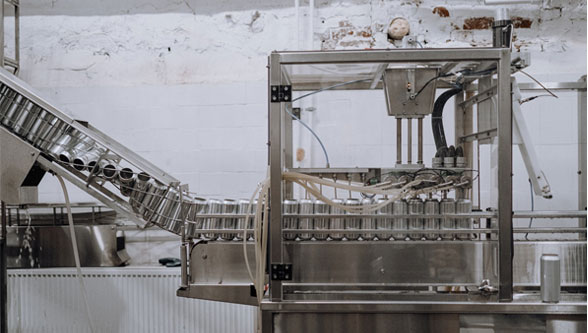The right automated systems can make workers safer by taking over tasks that are considered “dull, dirty or dangerous.” This frees up team members for more valuable work.
Many new automated systems also come with safety tech you don’t typically find in legacy machines. For example, light curtains cover the danger zone, and when interrupted, bring it to an automated stop.
However, while these systems can offer substantial safety benefits, they aren’t risk-free. Robots and automated machines can cause severe injuries if not properly managed — or if workers don’t know about the potential hazards they pose.
These best practices and tips will help you ensure worker safety with automated machines.
Develop a Safety Plan
A safety plan with clear procedures and instructions on how to work around automated machines will be one of the best safeguards you can have.
Workers should be aware of the potential risks an automated machine may pose. Staff must consider the devices to be safe by default, even if they’re machine-controlled or outfitted with automated safety systems.
For example, if there’s an automated machine with some kind of arc welder, workers and visitors in the area should have appropriate eye protection. That’s essential even if there are no plans to use the welder at that time.
A safety plan may also let staff know how they can work in an environment with autonomous robots or collaborative tech that operates near people.
It’s important to stress in training materials and documents that automated technology isn’t inherently safe or risk-free. Machines can still fail. Even the most sophisticated safety tech may have blind spots or oversights that won’t always be obvious before an accident happens.
Take Advantage of Automated Safety Technology
Newer, automated safety systems can also help keep workers safe. Collaborative robotics (cobots) can assist in jobs where repetitive tasks and repeated exposure to certain chemicals may put workers at risk of developing musculoskeletal disorders (MSDs) or cumulative trauma disorders (CTDs).
These cobots have safety features — like padded edges, machine-controlled automated stopping systems, and force or power limiters — that allow workers to interact with the robots safely.
However, like other machines, cobots are not inherently safe — and improper use can lead to injury or other accidents. Even safer automated systems have potential risks you should consider when developing your plan or designing a site’s work environment.
Other machines may be able to take on a task entirely by themselves. For example, palletizing and depalletizing is often still done by hand. Automatic systems can help free up workers for other jobs and provide additional benefits, like improved speed and consistency.
Automated machine safeguarding equipment can also provide an extra layer of protection for workers.
Systems like laser area scanners, safety light screens or curtains, and other technology can automatically shut down systems if they detect obstructions — like a worker — in a machine’s danger zone.
These systems also aren’t perfect. For example, an interrupted laser may not detect a worker in a danger zone. There’s also no guarantee that a light barrier or curtain covers all entrances to a machine’s danger zone. Safety systems can fail to account for the potential danger area of a device that breaks down or moves unpredictably.
Still, these safety systems can be a valuable resource for any business owner or supervisor working with automated machines.
A handful of companies in the robotics space — like Pilz, K.A. Schmersal and IDEC — primarily or exclusively develop safety systems for automated machines. Familiarizing yourself with the variety of automated robot safety tech available is a good step to take if you have the budget for these systems.
Design a Robot-Safe Work Environment
It’s also important to consider the arrangement of the environment where robots or automated tech will be working.
For example, autonomous robots function best if their working environment is clutter-free and when there is sufficient space for both people and machines.
In a warehouse, workers should keep the aisles free of pallets, packaging and other items. Supervisors and managers should also ensure aisles are wide enough for robots to navigate safely.
Improving the visibility of a robot’s path or working area with high-visibility tape, decals or other markings can also improve site safety.
If workers and visitors can see the routes a robot will follow — or the area in which a mechanical arm will swing — they’ll have a better chance of avoiding those danger zones.
Signage can also help here. If it isn’t immediately clear what a strip of safety tape or set of markings is supposed to represent, a simple notice or reminder in the right place can help keep people on the floor safe.
Implement Regular Training
Safety procedures are most effective when the workers they’re designed to protect are familiar with practices they need to follow.
Drills, along with regular audits of safety practices, can tell if your current way of doing things helps you avoid potential safety risks.
Reviewing safety procedures on a set schedule can also help you catch oversights and fold new knowledge into your plans and workflows.
Training will also help you comply with relevant OSHA standards on workplace safety. Be sure to stay updated on any changes.
Keeping Workers Safe Around Robots and Automated Machines
While automated machines are often safer than manual, legacy technology, that doesn’t mean they’re risk-free. Even equipment with advanced safety tech can still cause accidents if workers aren’t fully aware of the dangers they pose.
Good safety practices and the right planning can help avoid accidents with automated machines. Regular training is one of the best tools that heavy industry workers have when it comes to making the workplace safer.
Advanced safety tech, while it isn’t a replacement for safety plans and training, can help protect workers from machines.
Supervisors or business owners who have implemented automated machines — or are considering adopting the technology — should consider the potential benefits of these safety tools.
Article by —

Megan Ray Nichols
Freelance Science Writer
[email protected]
www.schooledbyscience.com/about

